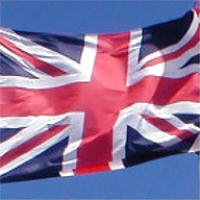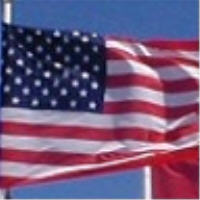|
The Bicentenary of the End of the Slave Trade 1807 - 2007
William Wilberforce - A Christian Warrior for Justice
Slavery has blighted humanity from before records began, but William Wilberforce and many others like him, believed
that the teachings of Jesus Christ emphasised the humanity and rights of every person.
Inspired by his Christian faith, Wilberforce and many others like him, started the campaign of a lifetime to bring a
total end to the slave trade within the British Empire and beyond.
In the early 1800s, the slave trade was making fortunes and those who were seeking to bring it to an end were
bitterly opposed. Wilberforce stood against public opinion and challenged big business who were doing exceptionally
well out of this cruelty and exploitation.
|
|

|
Wilberforce
Wilberforce and his friends were often discouraged, beaten back and appeared to fail on many occasions. But as the
many years passed, public opinion changed and support grew for the abolition of the slave trade.
The last letter ever written by the revivalist John Wesley (who died in 1791) was to Wilberforce encouraging him in
his labours for the abolition of the slave trade and expressed his concern for the vile treatment of slaves in America.
'American slavery, the vilest ever that saw the sun' wrote John Wesley.
In 1807, after years of struggle, the British Parliament abolished the slave trade and in the following years the
British used their influence throughout the British Empire, to force other nations to end the slave trade and
trying to eradicate (traditional) slavery itself.
|

|
|
The Jews and The Empires
From before recorded history slavery has blighted the world in one form or another.
The Jews escaped slavery but were enslaved on many occasions as the nations around them, plundered their territory and took
their people into captivity.
Joseph, the founder of one of the twelve tribes, was one of the most famous slaves that ever lived, having worked his
way from being a slave in his master’s house, to become the second in command in the Egyptian Empire.
During the days of the Roman Empire, the Coliseums became the focus for many slaves, who fought for their lives and
for the favour of the audience. Some won their freedom as the crowd and the crown honoured the victors.
|
The Old Testament and St. Paul
The Jews understood the cruelty of slavery, having been slaves in Egypt, before their great deliverance into the Promised
Land.
In the Old Testament Law, slavery was permitted in Israel, but it was not the slavery we understand from 200 years ago. Slaves
had rights in Old Testament law and if their rights were abused, by law they could expect the support and protection
of the law.
In the book of Philemon, the Apostle Paul deals with the issue of slavery. A slave left his master and became a
Christian. He became a great help to St. Paul, but on sending the slave back to his master, St. Paul noted that he
should now be treated as ‘a brother’ rather than a slave.
St. Paul did not address the legal system of the day, for many empires would come and go; but instead, he addressed
the attitude towards slaves in the human heart. He encouraged the slave owner never again to view this person as
a slave, but as a brother.
| |

|
African and Arab Slavery
Slavery was a common experience for people of all religions and races. Famously, an English slave, during the time of
the Roman occupation, was called an Angel, rather than an Angle.
African tribes often took their enemies into slavery and when the Muslims arrived, long before any Europeans, the
local people traded slaves with these Arabs. The Muslim slave traders began slavery before any Europeans and continued
long after it had been banned by the Europeans.
In another generation, David Livingstone famously wrote to Queen Victoria asking for help
to put the Arab slave traders out of business in central Africa and the British Empire used force in this cause,
not only in Africa, but in Brazil and other places as well.
The Spanish and the New World
In 1509 the modern slave trade began when a Roman Catholic Bishop encouraged Spanish settlers to bring a certain number of
Negro slaves to the New World.
In 1619 twenty African slaves arrived in Jamestown, Virginia, on a Dutch ship having to serve from four to seven years
labour before being set free.
In 1641 the first American colony, Massachusetts, formally legalised slavery.
In the 1660s slave laws in the southern states of America became very restrictive, including the forbidding of slaves to
own property, travelling without written permission from their owners and carrying weapons.
In 1663 Maryland, America declared all blacks currently in or being brought into Maryland
as slaves for life.
In 1700 Judge Samuels Sewall published the first pamphlet in the colonies condemning slavery. He argued
in his three page document that no man had the right to own another.
In 1733 Spain declared that escaped slaves from the colonies would be free upon reaching Spanish territory, including
Florida.
In 1753 Benjamin Franklin, the President of America, published a tract that stated that slavery was a bad economic system.
In 1769 Thomas Jefferson proposed a law before the Virginia Assembly that would emancipate slaves, but it was rejected.
In 1775 American George Washington declared that no blacks could serve in the Continental Army. The British offered
freedom to any black man that served with the Loyalist troops. Washington upon hearing this then reversed his orders.
In 1786 New Jersey banned slavery.
In 1785 the city of New York declared slavery illegal.
In 1789 George Washington became the first president of United States of America as the first national elections
were held.
|


|
|
The Beginning of the End
In 1807 the British Parliament abolished the slave trade. Christian MP’s like William Wilberforce had laboured endlessly
for this result and the last letter ever written by revivalist John Wesley (who died in 1791) was to Wilberforce
encouraging him on his labours for the abolition of slavery.
In America the Act to Prohibit the Importation of Slaves of 1807 came into effect the following year for the entire
US and its territories, but an estimated quarter million slaves were still imported up until the Civil War.
In 1820 an American census estimated that there were 1,538,000 slaves in the US and 233,524 free African Americans.
The overall population was 4,896,605 revealing that thirty percent of the population were slaves!
Slaves Freed in the British Empire
In 1834 the British Empire freed all slaves held in its territories, estimated at 700,000. The government total
compensation to the slave owners was £20 million, approximately £28.57 per slave, but former slaves got nothing
from the government.
America’s Independence from Britain gave citizens of the US a new-found self-confidence, but in the short-term, it was
a tragedy for African Americans.
A whole generation of African Americans lived and died as slaves, who would have been freed, if the US had remained
a part of the British Empire.
Americans would later experience the bloodiest and most cruel war the US has ever experienced on home land, when
citizens fought each other during the Civil War, on the very issue on slavery.
Abroad, having lost the protection of the British Royal Navy, American sailors also were targeted by Arab slave traders and the US
government paid millions to the slavers for protection money and to free their men.
|
North America Follows the British Lead
In 1827 Sojourner Truth (originally named Isabella Van Wagener) was given her freedom by her last master. Truth became an
evangelist and reformer and encountered the abolition movement in Northampton, Massachusetts and soon became an
advocate of women’s rights.
In 1864 Truth was received by President Lincoln at the White House. In 1842 Rhode Island gave African Americans the
right to vote.
Between 1861-1865 the Civil War in the United States between the North and the South was fought with the issue of
slavery at the fore.
In 1865 slavery was legally abolished throughout America, under the Thirteenth Amendment of the American Constitution.
In 1870 the American Constitution gave black men the right to vote.
|
Segregation in America
In 1881 America’s ‘Jim Crow’ laws segregating black and white people in public facilities and accommodations
were passed in Tennessee, violating the 1875 Act.
In 1883 in the Civil Rights Act of 1875 was overturned by the ‘Supreme Court.’
In 1942 the Congress of Racial Equality (CORE) was founded in Chicago. The organisation was dedicated to peaceful,
active promotion of black rights.
In 1943 CORE staged a sit-in in a Chicago restaurant that did not serve black people.
In 1955 Rosa Parks, a black seamstress (who became known as the mother of the modern Civil Rights Movement) sparked
a year-long bus boycott in Montgomery, Alabama, when she was arrested for refusing to give up her seat on a
segregated bus to a white man. It was one of the catalysts for the modern Civil Rights Movement which was led
by Baptist minister, Martin Luther King Jr. who sought non-violent confrontation with unjust equality.
In 1962 President Kennedy issued an Executive Order that barred any racially motivated discrimination in public
housing, in housing owned or operated by the government and housing financed by federal grants or loans. In the
same year African American, James Meredith was accepted to the University of Mississippi on court order, and
12,000 federal troops were assigned to the campus to maintain order during the rioting that followed.
In 1963 Martin Luther Jr. and 250,000 people marched on Washington where he declared in his most famous speech,
“I have a dream…” in which a plea was issued for equality and brotherhood between black and white people.
In 1964 President Johnson signed the Civil Rights Acts of 1964 into law which were initiated under President
Kennedy. It affected legislation for voting, schools, accommodation, federal aid, employment, and treatment
of civil rights cases in the courts. Martin Luther King, Jr. was awarded the Nobel Peace Prize for his work
in civil rights in America.
In 1965 Malcolm X, an African American Muslim activist (formerly holding separatist views - i.e. whites are evil)
and founder of Afro-American Unity was assassinated while speaking at a rally in Harlem by black Muslims.
In 1968 on the 4th April, Martin Luther King, Jr. was assassinated on the balcony of his Memphis hotel room.
In 1969 James Ray was sentenced to 99 years in jail for the murder of Martin Luther King Jr.
In 1992 a Jury acquitted four white Los Angeles police officers of beating black man Rodney King. The incident
was recorded on film and beamed across the world on national news; race riots began. King appeared on public
TV asking for calm.
The battle for equality and justice that William Wilberforce, and others began, still continues today; Martin
Luther King Jr. inspired another generation to move forward and others have been inspired by their legacy.
|
|